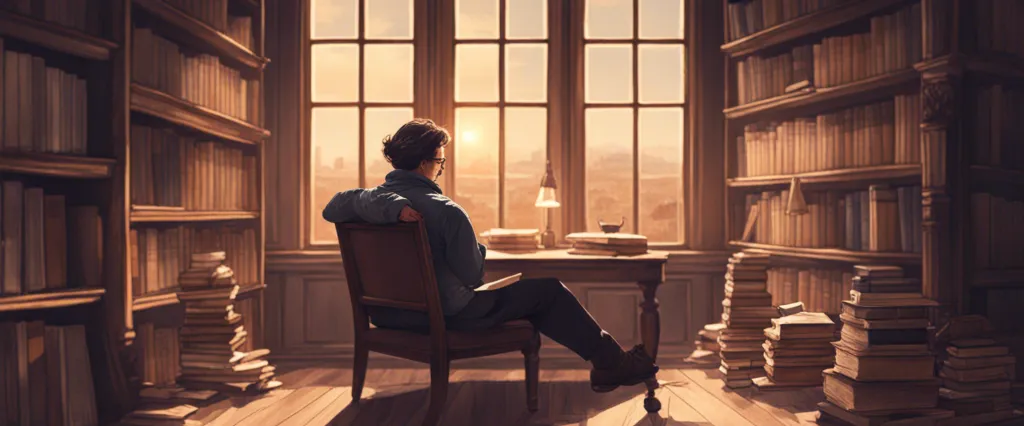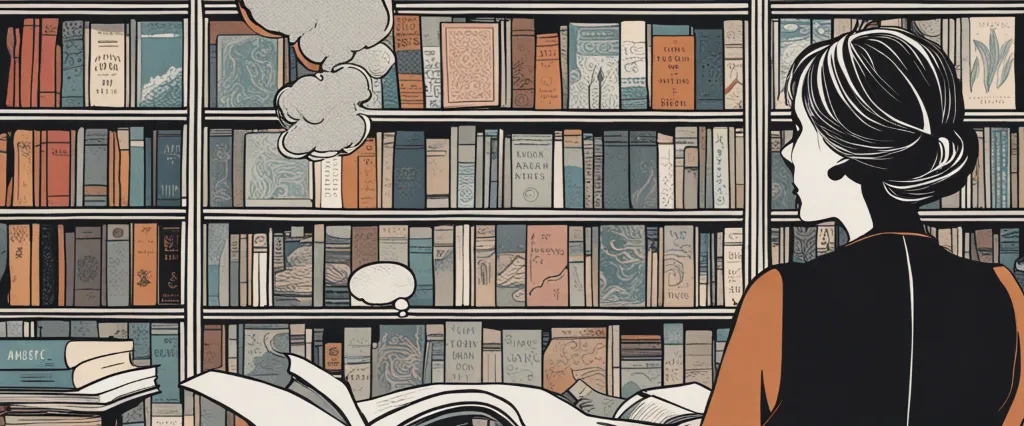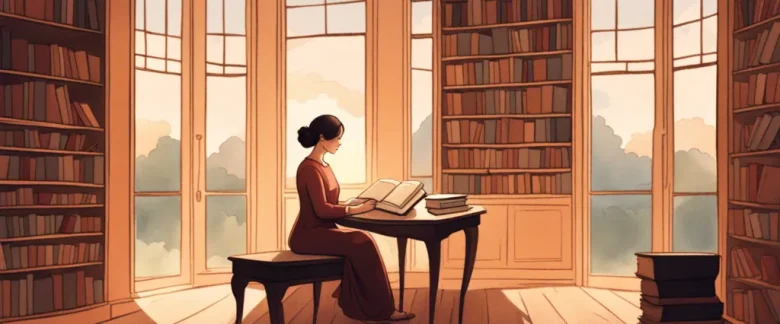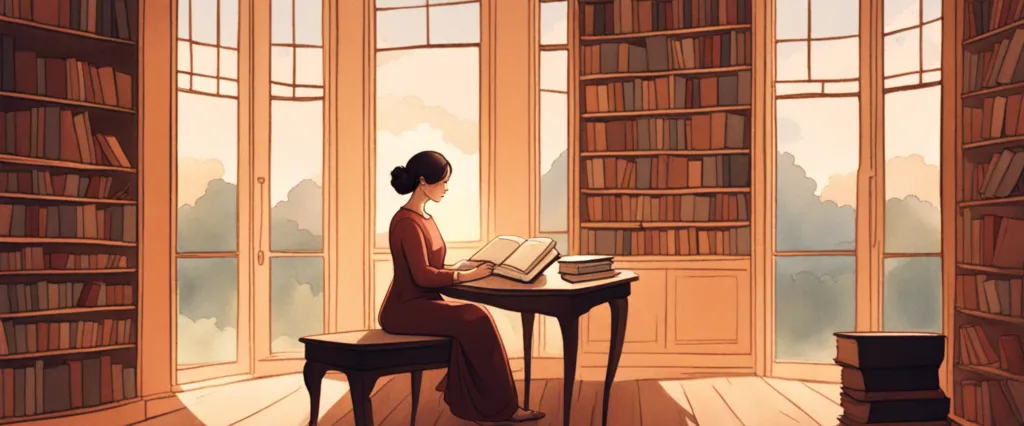“A Room of One’s Own” by Virginia Woolf is a seminal work of feminist literary criticism, exploring the themes of gender, literature, and independence. Born on January 25, 1882, in London, England, Virginia Woolf emerged as one of the most prominent modernist writers, known for her experimental style and profound insights into the human condition. With a distinct focus on women’s experiences, Woolf became an advocate for female artists and their need for a space of their own. In “A Room of One’s Own,” she delves into the issues surrounding women’s access to education, creativity, and financial independence, challenging the societal constraints that have historically hindered women’s literary achievements. Through a combination of personal anecdotes, historical analysis, and fictional storytelling, Woolf raises critical questions regarding the role of women in literature and society, igniting conversations that endure to this day.
Chapter 1: Restrictions on Women’s Education
In Chapter 1 of “A Room of One’s Own” by Virginia Woolf, the author explores the historical and societal limitations imposed on women’s education. Woolf begins by reflecting on the lack of recorded accounts and achievements by women throughout history compared to their male counterparts. She presents a fictional character, Mary Beton, who serves as her narrator and represents the struggles faced by women in pursuing education.
Woolf highlights the patriarchal society of the past, where women were deprived of equal opportunities to obtain an education, resulting in their absence from the literary canon. She argues that until the eighteenth century, women were oppressed due to their exclusion from financial independence, the legal system, and academic institutions. Education was reserved for men, and women were confined to domestic duties, which limited their intellectual growth and creative expression.
The author mentions the prestigious universities and libraries that were inaccessible to women, leading to a scarcity of female literary voices. Woolf emphasizes the significance of having both education and a room of one’s own as prerequisites for women to unleash their creative potential and contribute to society. She posits that without these conditions, women are forced to write in the margins of life, focusing solely on the trivial aspects of existence.
Through her analysis of historical data and compelling arguments, Woolf signals the need for social and educational reforms to allow women to fulfill their intellectual promise. She calls for a world where women have the freedom to learn, write, and independently create a legacy for themselves. Woolf’s chapter lays the groundwork for her exploration of women’s struggles and achievements in later sections of the book, setting the stage for a broader discussion on gender equality and artistic freedom.
Chapter 2: Women’s Economic Dependence
In Chapter 2 of “A Room of One’s Own,” Virginia Woolf explores the economic restrictions faced by women throughout history. She argues that women’s lack of financial independence has hindered their ability to fully realize their potential as artists and writers.
Woolf begins by highlighting the significance of money and how it has historically been controlled by men. She illustrates this point by referring to the fictional sister of William Shakespeare, who, being equally talented but lacking opportunities, would never have been able to achieve the success her brother did. Woolf contends that financial dependence has limited women’s ability to create art and pursue intellectual endeavors, as they have been preoccupied with survival and the service of men.
The author expands on this idea through various anecdotes and historical examples. She criticizes society’s perception of women as financial burdens and reveals how this belief has prevented women from receiving the same educational opportunities as men. Woolf argues that this inequality is not due to a lack of female intellect but rather to women’s economic dependence on men.
Additionally, Woolf examines the different economic situations of women throughout history based on class. She observes that working-class women have often faced even greater economic restrictions, as they had to prioritize their domestic duties and lacked the time and resources for creative pursuits.
In conclusion, Chapter 2 of “A Room of One’s Own” emphasizes the significance of economic independence for women’s artistic development and intellectual achievements. Woolf suggests that only when women have the financial means and freedom to pursue their passions can they fully contribute to literature and society as a whole.
Chapter 3: A History of Women in Literature
Chapter 3 of “A Room of One’s Own” by Virginia Woolf, titled “A History of Women in Literature,” explores the constraints and limitations that women have faced throughout history when it comes to their creative expression through literature.
Woolf starts by reflecting on the representation and depiction of women in literature by male authors. She argues that throughout history, women have been portrayed mainly through the eyes of men, with stereotypes and narrow perspectives dominating the narrative. This oppressive portrayal, according to Woolf, is due to women not having the freedom, education, or opportunities to write and express their own experiences and voices.
She then delves deeper into the history of women in literature, mentioning some of the limited opportunities women had to engage with the written word. Woolf traces the beginnings of women’s writing back to the 16th century, with the works of women such as Lady Winchilsea. She also touches upon the obstacles faced by well-known female authors like Aphra Behn and Charlotte Brontë, highlighting the societal norms and pressures that hindered their literary success.
Woolf emphasizes that for a long time in history, women were discouraged from pursuing intellectual pursuits, and the male-dominated literary canon played a significant role in perpetuating the stereotype that women’s writing was inferior. However, she believes that the faultiness lies not with women’s ability to write but with the lack of resources, opportunities, and encouragement they were provided.
In concluding the chapter, Woolf expresses optimism for the future possibilities and growth of women’s writing. She calls for women to support each other, demand the necessary resources, and create a space for their voices to be heard, thus breaking the barriers that have hindered their literary contributions for centuries.
Chapter 4: Conditions for Women’s Writing

Chapter 4 of “A Room of One’s Own” by Virginia Woolf explores the conditions under which women were able or unable to write throughout history. Woolf argues that women have been hindered from expressing themselves due to societal restrictions, lack of financial independence, and limited educational opportunities.
She begins by discussing the Elizabethan era, pointing out that there were no prominent female writers of that time. She asserts that this was not due to a lack of talent, but rather because women did not have the same educational opportunities as men. Women were not encouraged to pursue writing or intellectual pursuits; instead, they were expected to confine themselves to domestic duties. Woolf argues that without the same education and freedom as men, women’s works were stunted.
Woolf also examines how women writers were often relegated to a domestic sphere and excluded from the larger literary world. Female authors faced criticism and were not given the same recognition as their male counterparts. She cites examples of women who had to adopt male pseudonyms to publish their works or were only able to achieve success by conforming to patriarchal expectations and writing in a prescribed feminine style.
Furthermore, the lack of financial independence for women also constrained their ability to write. Women were dependent on men for financial support, and without individual wealth or a means of earning money, their writing aspirations were thwarted.
Woolf concludes by emphasizing the need for women to have their own financial stability and personal space in order to write freely. She argues that women need money and a room of their own, both literally and metaphorically, to break free from the limitations imposed by society and contribute their unique perspectives to the literary canon.
Chapter 5: The Tradition of Women’s Literature
Chapter 5: The Tradition of Women’s Literature, in Virginia Woolf’s book A Room of One’s Own, explores the history and representation of women in literature. Woolf argues that for centuries, women have been excluded from the literary tradition due to societal constructs and limited opportunities for education and creativity.
Woolf begins by highlighting the few women who were able to break through these barriers and make significant contributions to literature. She discusses writers like Aphra Behn and the Brontë sisters, who faced various challenges such as societal expectations, lack of resources, and criticism for their works. According to Woolf, these women succeeded not because of their gender, but in spite of it.
Woolf observes that throughout history, women have been largely absent from the canon of great literature. This absence is not due to a lack of talent or ability, but rather the result of structural inequalities in society – women were often limited to domestic roles and seen as inferior to men intellectually.
Woolf emphasizes the need for female writers to develop their voice and style, stating that they should not strive to imitate male authors. Instead, women must find their unique perspective and write in a way that reflects their experiences and challenges the traditional male-dominated literary canon.
Woolf concludes the chapter by asserting that women’s literature should be valued and championed. She argues that by recognizing and celebrating works by women, society can begin to challenge and break down the barriers that have excluded them from the literary tradition. Ultimately, Woolf’s aim is to inspire women to claim their own space in literature and to encourage a greater appreciation for women’s writing.
Chapter 6: Creating a Space for Women’s Writing
Chapter 6: Creating a Space for Women’s Writing of the book A Room of One’s Own by Virginia Woolf explores the challenges faced by women in the literary world and the need for a welcoming space for women’s writing. Woolf begins by discussing the importance of literature in transforming and shaping society’s views on women. She argues that women throughout history have been underrepresented and marginalized in literature, leading to a lack of a female voice and perspective in the literary canon.
Woolf emphasizes the significance of financial freedom and independence for women to produce quality literature. Women have been historically deprived of economic opportunities and education, which has limited their ability to write and publish. She argues that women need a literal and metaphorical “room of one’s own” – a physical space free from distractions and responsibilities, as well as financial means, to focus on their creative work.
Woolf mentions notable female writers who managed to overcome societal barriers, such as Jane Austen and the Brontë sisters, but highlights the fact that their achievements were exceptional rather than representative of the broader female experience. The lack of a supportive environment and recognition for women’s writing has resulted in generations of talented female writers being unheard and their potential wasted.
In this chapter, Woolf also critiques the male-dominated literary tradition, as she believes that it has perpetuated stereotypes and objectification of women. She urges for a new literary tradition that includes the voices and experiences of women. Woolf suggests that women need to write honestly, unapologetically, and without fear of judgment in order to challenge societal norms and redefine their roles within literature.
Ultimately, Woolf argues that women must have the freedom, both physically and financially, to write without constraints in order to create a space for women’s voices to be heard and represented in literature.
Chapter 7: Women’s Self-Expression
Chapter 7: Women’s Self-Expression of A Room of One’s Own focuses on the theme of women’s self-expression and the challenges they face in a male-dominated society. Virginia Woolf begins by asserting that women have been marginalized throughout history and denied the opportunity to express themselves freely in various forms.
Woolf notes that while women may have written excellent works in the past, their efforts have often been ignored or overshadowed. Reflecting on history, she highlights examples of women writers who faced criticism and prejudice due to their gender, such as Jane Austen, who was constrained to focusing on narrow aspects of life and subjected to limited recognition and trivialization of her works.
Woolf then explores the notion of androgyny, emphasizing that the ultimate goal is for humanity to encompass both masculine and feminine qualities. She suggests that women need to liberate themselves from societal expectations and assert their own unique viewpoint, rather than imitating male ideals. This, she argues, would lead to a more holistic and inclusive literature.
Woolf concludes the chapter by highlighting the importance of women having financial independence and the necessity of a room of one’s own, both literally and metaphorically, to foster creativity and self-expression. She believes that only when women are able to freely express themselves without the pressures of societal limitations will they be able to produce great works.
In summary, Chapter 7 of A Room of One’s Own examines the challenges women face in expressing themselves in a patriarchal society. Woolf emphasizes the need for women to reclaim their own unique voice and avoid imitating male ideals, as well as highlighting the importance of financial independence and having a space of their own for creative freedom.

Chapter 8: Freedom and Equality for Women
Chapter 8 of “A Room of One’s Own” by Virginia Woolf is titled “Freedom and Equality for Women.” In this chapter, Woolf delves into the significance of freedom and equality for women in the context of literature and society.
Woolf begins by highlighting the lack of true freedom and equality women have faced throughout history. She emphasizes that women have been restricted by the societal expectations imposed upon them, limiting their opportunities for education, financial independence, and the pursuit of their own desires. This lack of freedom, according to Woolf, has hindered women’s ability to produce great works of literature.
Drawing from her observations and research, Woolf explores the works of great female authors like Jane Austen, Emily and Charlotte Brontë, and George Eliot. She argues that while these women were able to overcome societal barriers to some extent, their work still reflects the influence of male-dominated literary traditions. Woolf contends that women’s writing needs to be freed from the constraints of these traditions in order to fully express their unique perspectives and experiences.
Woolf also discusses the importance of financial independence for women to truly achieve freedom. She asserts that women need economic freedom in order to have the time, space, and resources necessary to pursue their artistic aspirations. The lack of economic opportunities for women has historically limited their ability to produce great works of literature.
Ultimately, Woolf concludes that for women to achieve true freedom and equality, they need a room of their own and a steady income. Without these, women will continue to be oppressed and their voices silenced. Only when women are free from societal constraints and have the means to support themselves can their full potential and creativity be unleashed.
After Reading
In conclusion, Virginia Woolf’s “A Room of One’s Own” is a powerful and thought-provoking exploration of women’s experiences and the societal barriers they face in their pursuit of creative expression. Through her reflection on the relationship between women and literature, Woolf highlights the importance of economic independence and physical space in ensuring women’s intellectual and artistic freedom. By envisioning a fictional sister of Shakespeare, Woolf sheds light on the untapped potential of women’s creativity and calls for a future where women have the same opportunities and resources as men. Ultimately, “A Room of One’s Own” serves as a rallying cry for gender equality and an urgent reminder of the enduring need for female voices to be heard and celebrated in the literary world.
1. “The Second Sex” by Simone de Beauvoir: This groundbreaking feminist work explores the concept of womanhood and the oppression faced by women in society. Beauvoir delves into topics such as sexuality, motherhood, and the struggle for equality, providing a thought-provoking analysis on gender roles.
2. “The Yellow Wallpaper” by Charlotte Perkins Gilman: Similar to Woolf’s work, this short story focuses on women’s mental and emotional confinement. Set in the late 19th century, it tells the story of a woman who is prescribed the “rest cure” for her postpartum depression, leading to her gradual descent into madness.
3. “The Bell Jar” by Sylvia Plath: Plath’s semi-autobiographical novel follows the story of Esther Greenwood, a young woman struggling with her identity, mental health, and societal expectations. It offers a poignant exploration of the constraints faced by women in the 1950s and remains a classic feminist piece.
4. “Men Explain Things to Me” by Rebecca Solnit: In this collection of essays, Solnit brings forth the concept of “mansplaining” and the pervasive silencing of women’s voices in various realms of society. With wit and precision, she sheds light on the power dynamics between the sexes and the importance of women’s empowerment.
5. “Sister Outsider” by Audre Lorde: Lorde’s collection of essays and speeches delves into essential feminist and social justice issues. Touching on topics such as race, sexuality, and feminism, she offers a powerful exploration of intersectionality and the need for solidarity among marginalized groups. With poetic prose and an unflinching gaze, Lorde inspires readers to challenge societal norms and fight for equality.




